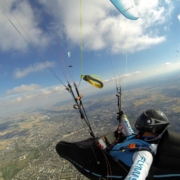Interview of Martin Morlet: Exploration and Long distance paragliding flights
In our series “TopMeteo family pilots”, here is an interview with Martin Molet who, with friends, explores new spots around the world for long distance flights with paragliders.
Hello Martin, can you introduce yourself?
I started paragliding quite a long time ago, at the end of the 90’s. I learned to fly in a Parisian school called “Propulsion”, using the flatland’s spots that we have around Paris: in Normandy, in Burgundy, … Obviously, it would have been slightly easier in a mountain area. Near Paris, we are flying on hills that are only 50-100 meters high. But I quickly got the cross-country bug. Indeed, shortly after starting, I had the opportunity to climb to the cloud base. I had seen before in magazines that some pilots were covering distances like that, so I thought: let’s give it a try! And just like that, I did my first cross-country flight. It’s been a long time, and I wouldn’t be able to tell you how much distance I’ve flown this day, but it had a huge impact and this appeal for cross country never left me. During my studies, I found the time to do national and international competitions (two World Cup events). However, I had to slow down, and even stop for some years as I worked abroad. But before that, I had the opportunity, with two other “acolytes”, Franck Arnaud and Julien Dauphin, to really develop cross-country flying over the French flatlands. I did the first 200k in 2003. Then it was Julien who, in 2005, did the first 300k, and then I did the first 400k in 2016, which was also the European foot launch record. I also have two FAI ratified European records: a straight distance to a declared goal of 272km, and, in 2017, a distance via 3 turn points of 372km. So here it is, a slightly jagged course but ready for new adventures…
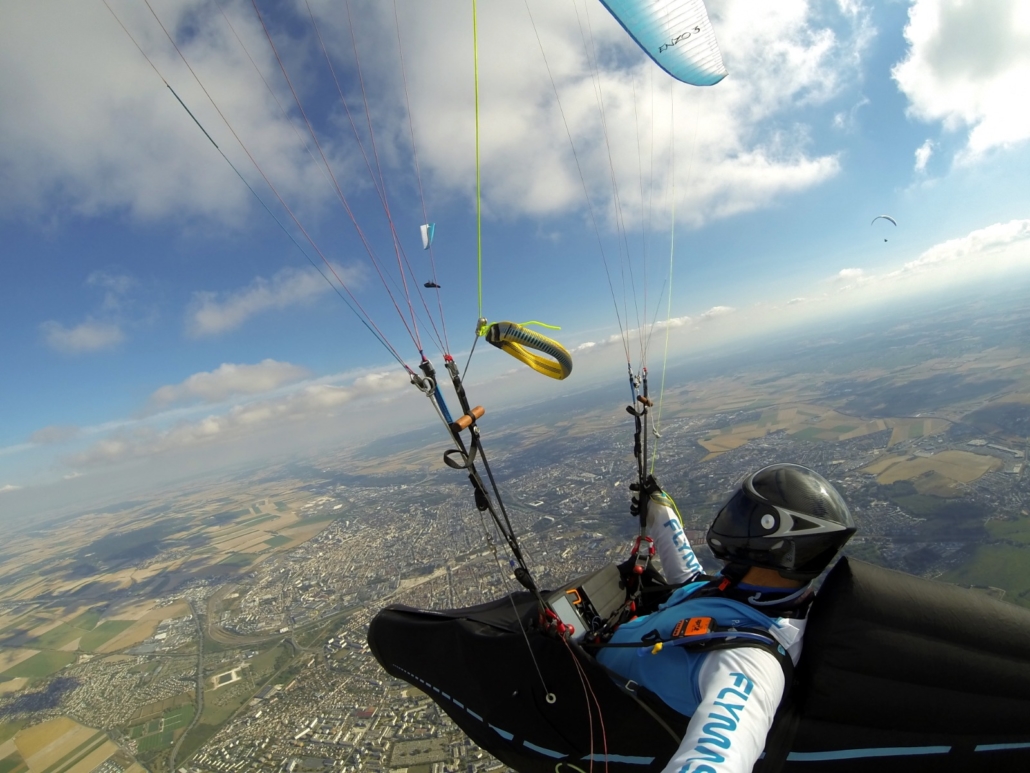
Why did you choose to focus on distance flights and records?
Records, for me, are secondary. I didn’t think about them at first. I like cross-country flying. More exactly, what I like is gliding. Windsurfing was a passion when I was young, and now I am “windsurfing” another element, which is great! I really enjoy keeping this symbiosis with nature for as long as possible, all day long, it’s incredible. In a way, it definitely reminded of those years windsurfing, this time through the invisible, like a permanent wave where you try to pick up the next lift that will take you a little further… Being able to enjoy and absorb all the energy from the element, without even seeing it. Then, there is this spirit of the “line”: crossing a landscape, a region, sometimes places you know, but mostly unknown territory you discover. The contemplative spirit of flying is also incredible. But when you’re a pilot, it goes without saying.
A small technical question for me who am not (yet) a paraglider pilot, what are the characteristics of your wings?
I fly with a glider considered as one of the best: an Ozone Enzo3. In Europe, there are different certifications: EN-A, -B, -C, -D. The higher you get in the letters, the better the performance of the glider, but at the same time, the more delicate it can be. As you fly with an inflated structure, you are more sensitive to the hazards of the air. Performance gliders are harder to control than the beginner ones. My glider is a “CCC”. It is a certification specific to competition-oriented gliders. On this type of glider, we have a glide ratio at around 10, some say maybe a little bit more, 11. We fly at about 38kph[1]. The wing stalls at about 25kph and, you can reach roughly 60kph maximum using a speed bar. This control is activated with the foot and allows you to change the angle of attack/incidence of the wing to gain speed. The minimum sink rate is about 1 meter per second. We are miles away from sailplanes and hang gliders in that regard, but when we land, we fold up, put it back in the rucksack, and go for a walk with the glider on our back. It’s unbeatable.
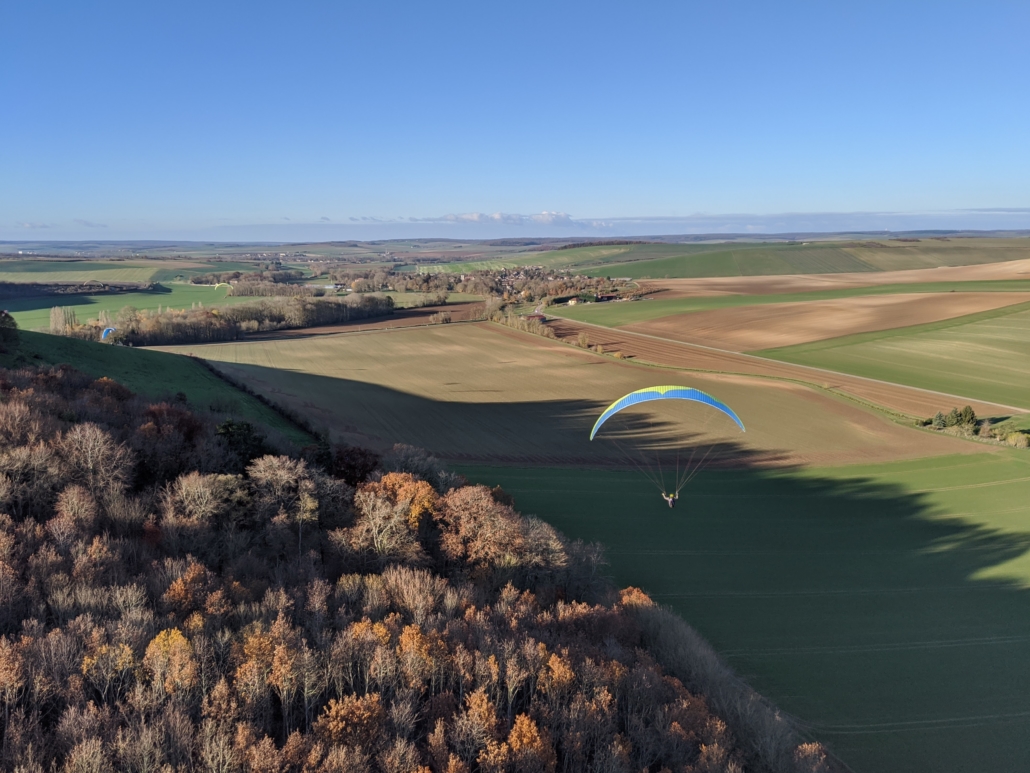
What is the turn radius with a paraglider?
It’s a good thing you’re asking me that question because until now, it hasn’t been very well documented. We knew that some gliders circled wider than others, but not much more… Recently, with two friends, we developed a statistical app, called XC Analytics, that analyzes the IGC tracks. So now, I can give you a more precise answer. Depending on the pilot, most of the time we are between a 20 and 30-meter radius. At those tilt angles, we are at about 1.4m/s of sink rate or more.
In preparation for the interview, I was looking at the analysis you do of flying and I was very surprised to see that paraglider pilots can spend 10% of their time “looking for thermals”. This seems huge to me.
It’s true, though. You have to put things in context a bit. In paragliding, we are less able to go looking for the next thermal far away. As a result, we are very often in search for a thermal. But we don’t necessarily see a big difference between good and very good pilots on the time spent here. In general, in paragliding competitions, we do not observe that the biggest differences are made in the climbs or looking for them. On the contrary, gliding well is absolutely critical. This is where we observe that the gaps widen.
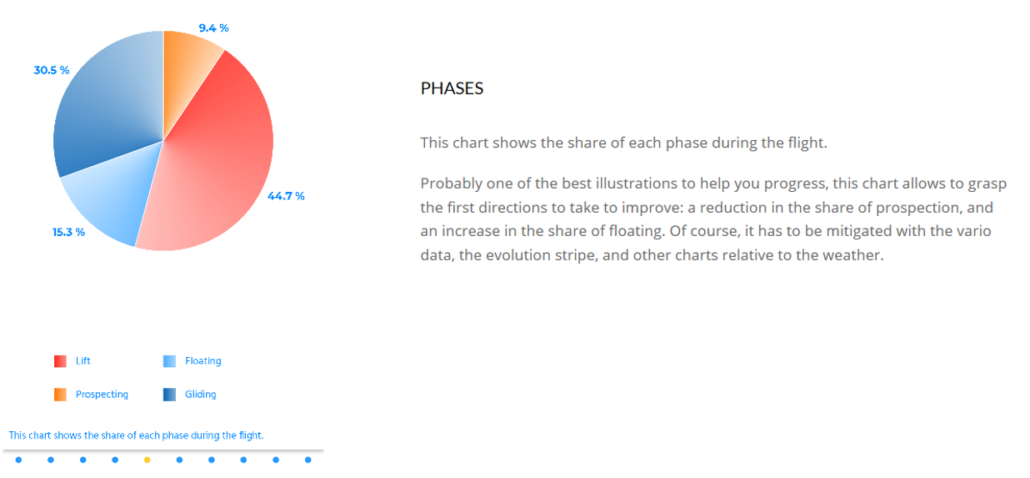
Your application helps pilots analyze their flights and see what points they have to work on. If you apply it to yourself, what do you get?
For me? That’s easy. I learned it very early on, through competitions. I’m more of an attacker. And I have a natural tendency to fly alone, to fly fast, and to fly ahead. Which, in general, is not always a good idea… It was useful for me at the beginning, coming from the flatlands, to be able to compete with the alpine pilots on their ground, but afterwards I had to rein in this nature a bit to reach the French top 10. During the cross-country flights on the flatlands, I often have to compel myself to decrease the level of risk I take according to the weather conditions. Don’t go too low. Keep the good varios at the middle and high levels, maximize the lines of energy. It’s not that you can’t take varios very close to the ground. It’s stressful but it works well with a paraglider. However, when you’re at the bottom, you have less choices. So this is usually what I need to keep in mind if I want to fly at my best. On the other hand, one of my strengths lies in managing the changes of rhythm during the flight. I usually have a good reading of the air mass, because I spent quite a lot of time learning about the weather.
I’m going to come back to the weather point, but I have a question about the glide. Do you use McCready speed?
Actually, no, not really. Because our performance range is very different from the gliders. Often, if you follow the McCready speed in paragliding, you might land way before the next cumulus! When I used to compete, and I don’t know if that’s still the case, we used to have “numbers” in our heads. We knew our GPS speed, we estimated the wind speed, the performance of our glider and the average varios over the day. With that, everybody had a way to estimate the appropriate speeds. At the moment, very good competition pilots only attack hard if the next thermal is well materialized, for example by other competitors. For my part, I find that Cochrane’s formula[2] is much more adapted to paragliding than the McCready one.
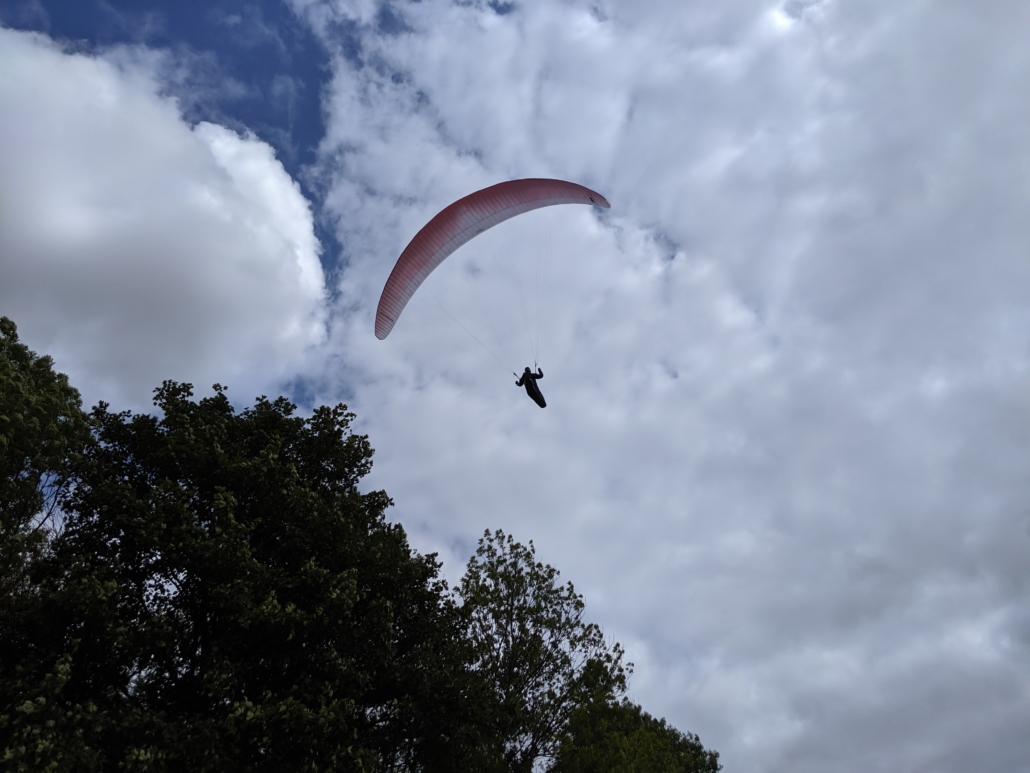
How do you plan your flights?
That’s a very good question. I’d say planning is almost 80% of the job. It’s tough work because there are so many parameters to take into account. First of all, the weather. Because of our aircraft, we have a reduced flight range and we can only use a reduced spectrum of weather conditions: not too much wind, but a little bit anyway. We need good thermals, too. It is almost impossible for us to do wave flights because of the wind. Next, depending on the weather, we will choose our take-off location. We are not attached to an aerodrome and therefore the choice of the site is essential. It must be well oriented in relation to the wind. It also needs to be in the right area. Within a few kilometers, the weather can change and we don’t have the possibility to make a 20k glide to get to the right spot. So, the choice of the site according to the weather is absolutely critical. In addition, we have to take into account the airspace. Our gliders are not registered, which means it is in theory impossible for us to talk with the controllers and to enter most of the airspace types. So, very often, we have slalom between airspaces, sometimes flirting within tens of meters if needed… Therefore, we have to anticipate which line will be the best and how we will be able to get around the airspace. We do a lot of preparation work calling the control towers, consulting the NOTAMs, looking at the different airspaces. And if we do everything right, then you find on the right spot, with the right alignment of clouds, no zones, etc. A good pilot has to know how to prepare his flights and find the right lines. The performance as such is less important than preparation. For example, the day I did the first 400k, I was on a spot near Rouen and many of my friends were on another one, only a hundred kilometers away from me, near Caen, and they didn’t even get to cloud base…
So, the weather forecast is essential. What’s the parameter you’re looking at first?
Everyone has their own recipe. Mine’s starting to get complicated. Of course, it depends on your objective. For example, for a triangular circuit in the flatland, almost no wind is required. So, you need a towing platform (without wind, small sites are too risky). And a good air mass of course. The logic to optimize a paragliding triangle on the flatland is to ponder on the movement and rotation of the anticyclone, to benefit from the little wind available to get help on each branch. For big straight distances, we look for the site with the maximum wind, within acceptable limits, with the best air mass. When I say acceptable, I mean: 25 kph. We can go up to a little more than 30kph but it can be dangerous. I’ve been using TopMeteo for many years, so I am used to it. I can guess how the model reacts. I can confront it with other models but especially with reality! So, I track the evolution between the model and the real situation, to see if the model fits the reality. Sometimes I have to mix and extrapolate with different models, to have a clear idea of the positioning required for D-day. Now, I have my habits, and it goes pretty fast if you have a good routine. But, at the beginning, I spent a lot of time practicing.
You ever been caught out by the weather?
On the flatlands, never. The evolution of the weather is finer and also more readable. However, in competitions in the Alps, yes, it happened. For example, if the task director doesn’t anticipate on a strengthening of the valley breeze, or even of the general flow. It’s never a good experience. If the wind increases just by 10kph, you go from “practicable” to “dangerous”! Weather forecasting is essential in paragliding.
What is your favourite product at TopMeteo?
My favourite is very basic: cloud cover. In my opinion, TopMeteo has the best cloud cover forecasting service available on the market. And for us, once again, it has a very important impact to have an accurate vision of what’s going to happen. Even if TopMeteo, like the others, can be wrong, on cloud cover, TopMeteo is the most accurate and the one that is the least wrong, especially on good days. And for us, it’s a determining factor, so I’ve been a subscriber for a long time and I’ve always loved it. Can’t find better for cloud cover.
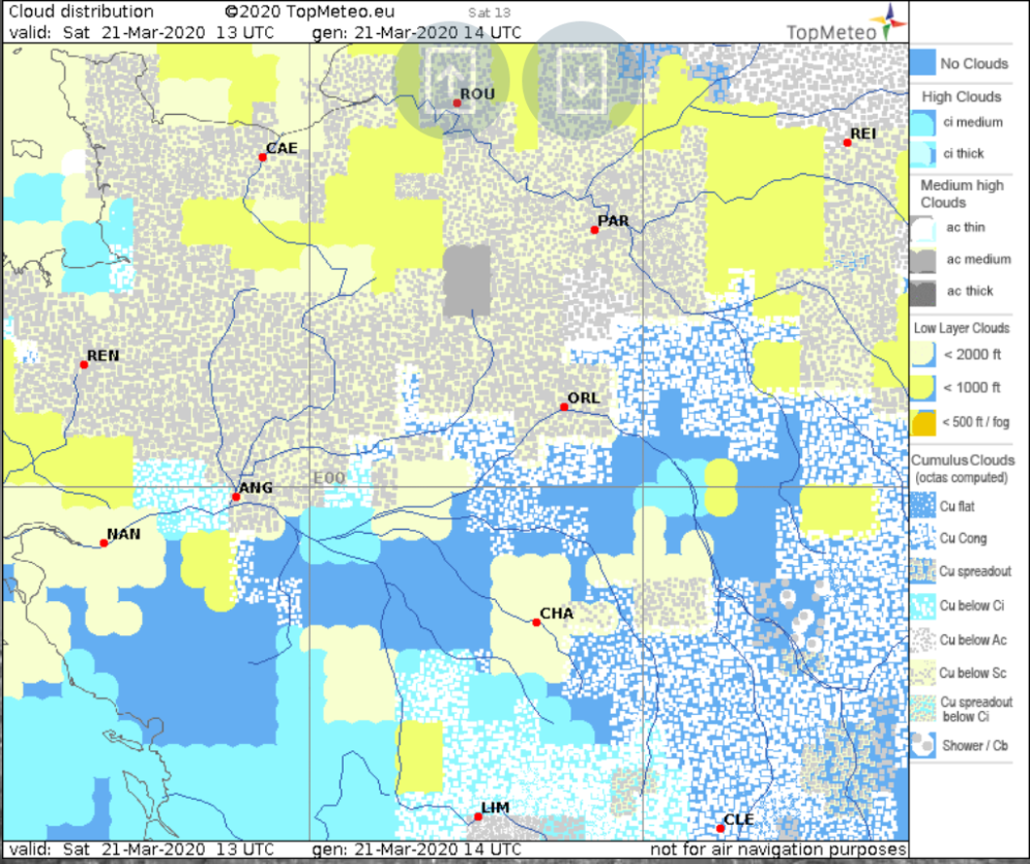
If you had to create the next TopMeteo service, what would you want?
If I have a criticism to make, it’s that I’d like to have more details on the prediction modes. Maybe some Skew-T forecasts? It’s not to improve the prediction, but to know more precisely why the model thinks that. I know it’s tricky request, because basically I’m asking to maybe reveal some of the proprietary overlay of TopMeteo, so I understand it’s a questionable request.
Otherwise, a lot of pilots would like to have a “varios map”. For my part, I would like to have access to the archives. We are preparing a big flight expedition somewhere in Europe and I would like to have access to the archives to be able to fine-tune the forecasts.
So can you tell us a little bit about your plans for 2020?
Ha-ha. It’s still in preparation, and I don’t want to say too much at the moment, but with my “acolytes” Fred Delbos, Maxime Bellemin and Jean Claude Deturche, we’re looking for places to do long distance flights, not too far from home. We are a great team: Fred is a pilot with whom I fly regularly. He took the French record from me last year. A very good pilot. Maxime is a seasoned competitor. He has been in the world cup for several years with very good results. He was several years among the 20 best pilots in the FAI ranking. Finally, Jean-Claude, is perhaps the least experienced pilot but he is already very strong, training in the flatlands with us. He always has this pleasant curiosity, and we can always rely on his smooth talk for our adventures.
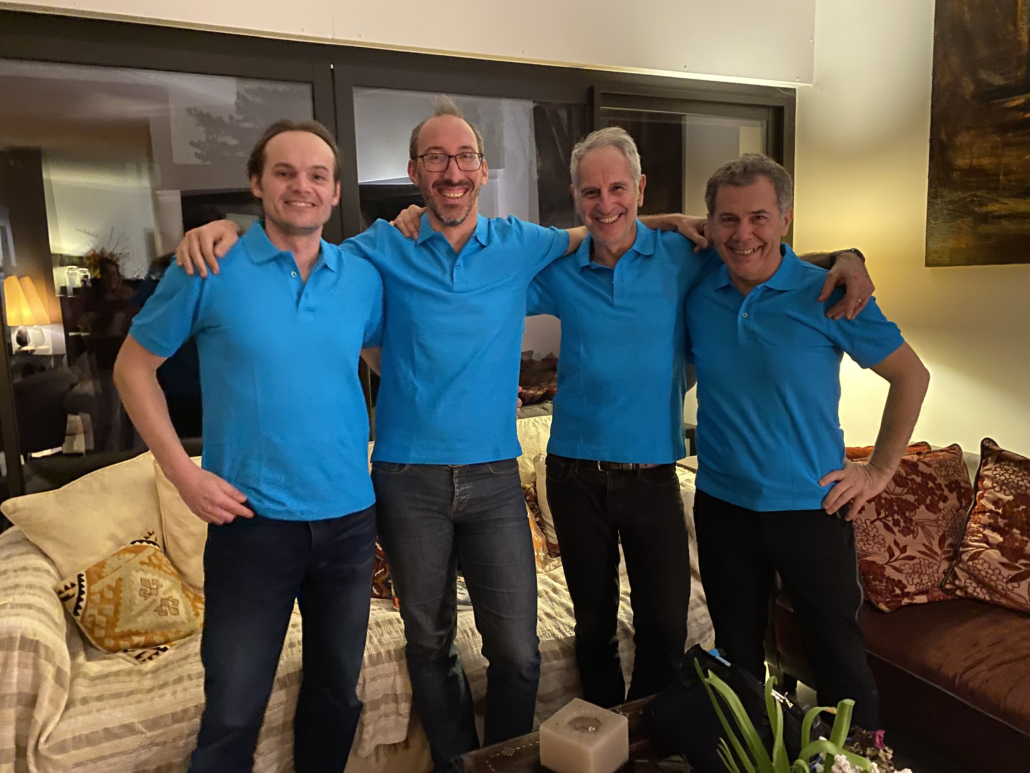
Our project: until now, to make great flights, there has been Texas, South Africa, and recently Brazil. Awesome places. You have many five stars days there, where it is possible to break world records, but it’s far away and we already know the area. So we want to discover a new playground that hasn’t really been fully explored yet. We want to expand our horizons, discover new people, a new region, a different weather, and try new flying styles. We’re already preparing: contacting locals, looking at airspaces, spotting possible sites… We contacted TopMeteo to analyze the weather and compare their insights with our weather analysis/flight experiences… If everything goes as planned, we’ll be able to write a new article describing our adventures, and to share our discoveries.
[1] Speed without breaks or speed bar
[2] https://faculty.chicagobooth.edu/john.cochrane/soaring/docs/newmcred.pdf

